This page contains several visualizations which have been prepared in the
course of GFDL's research, and subsequently presented at meetings and in
the media. These are offered here not so much as scientific research results,
nor do they necessarily represent the entire spectrum of research being
conducted at GFDL, but rather as examples of various visualization techniques
and how they might be used to convey complex results as understandable images.
A number of visualizations are also available in the form of annotated
handouts.
Note:
Redistribution of these materials is permitted, but we ask that
NOAA/GFDL is credited as the source and that we are informed of the usage.
Please also see our
Disclaimers
and
Privacy Policy.
Categories |
|
| Atmosphere (Earth, Jupiter, Mars) |
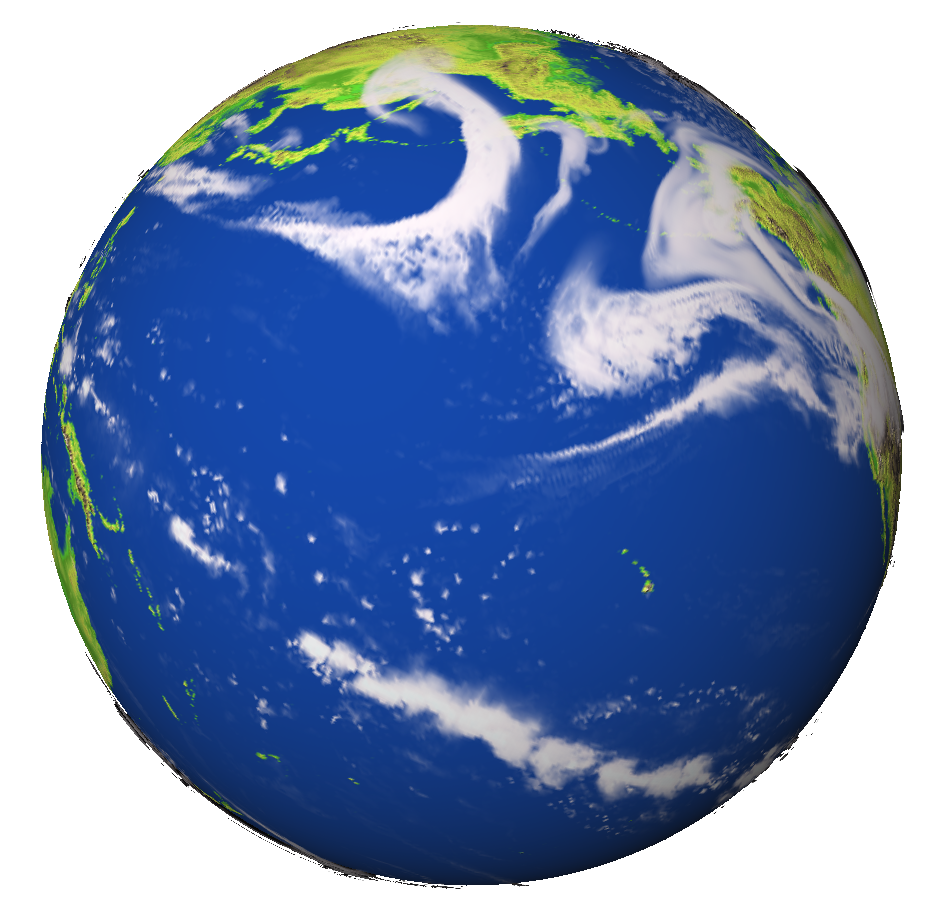
|
| Climate Diagnostics | |
| Climate Prediction (Global Warming, El Niño) | |
| Hurricanes | |
| Mesoscale Dynamics | |
| Oceans | |
| Animation Viewers | |
| Visual Index | Visualization Software |
Featured Visualizations
Hurricane Isabel (2003) | |
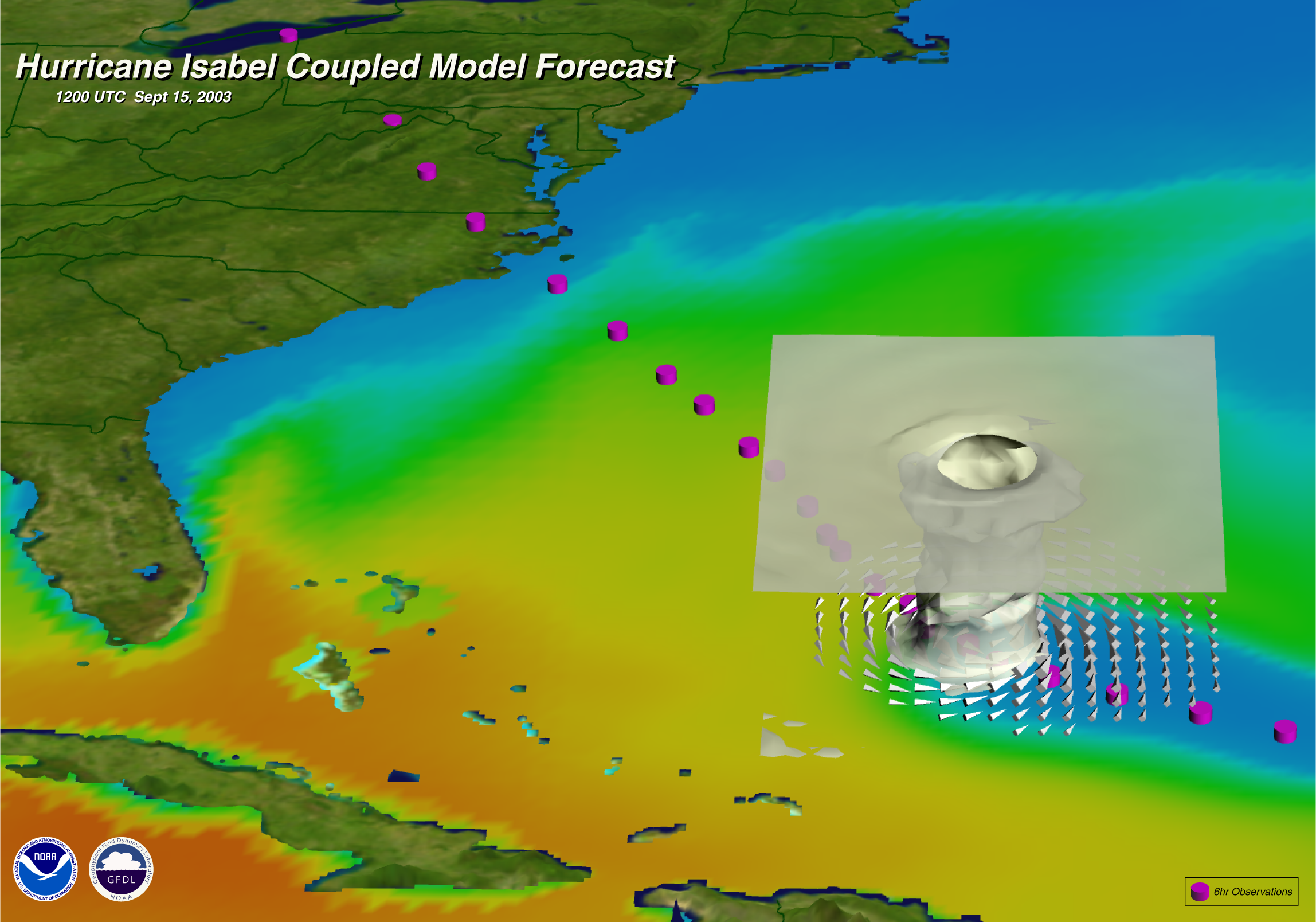
|
Hurricane Isabel, which struck the Outer Banks of North Carolina on
September 19th, 2003, caused extensive damage over a large area of the
mid-Atlantic coast stretching from North Carolina to northern Virginia.
|
Mesoscale Circulation Modeling | |

|
A stand alone explicit convection ZETAC model simulation (TERRA HRG_a) was done for the globe with an astonishing averaged grid resolution of about 10-12 km. Images and animations are available for this in addition to lower resolution experiments (TERRA HRG_00) and Pacific Storm Tracking. |
El Niņo Forecasting | |
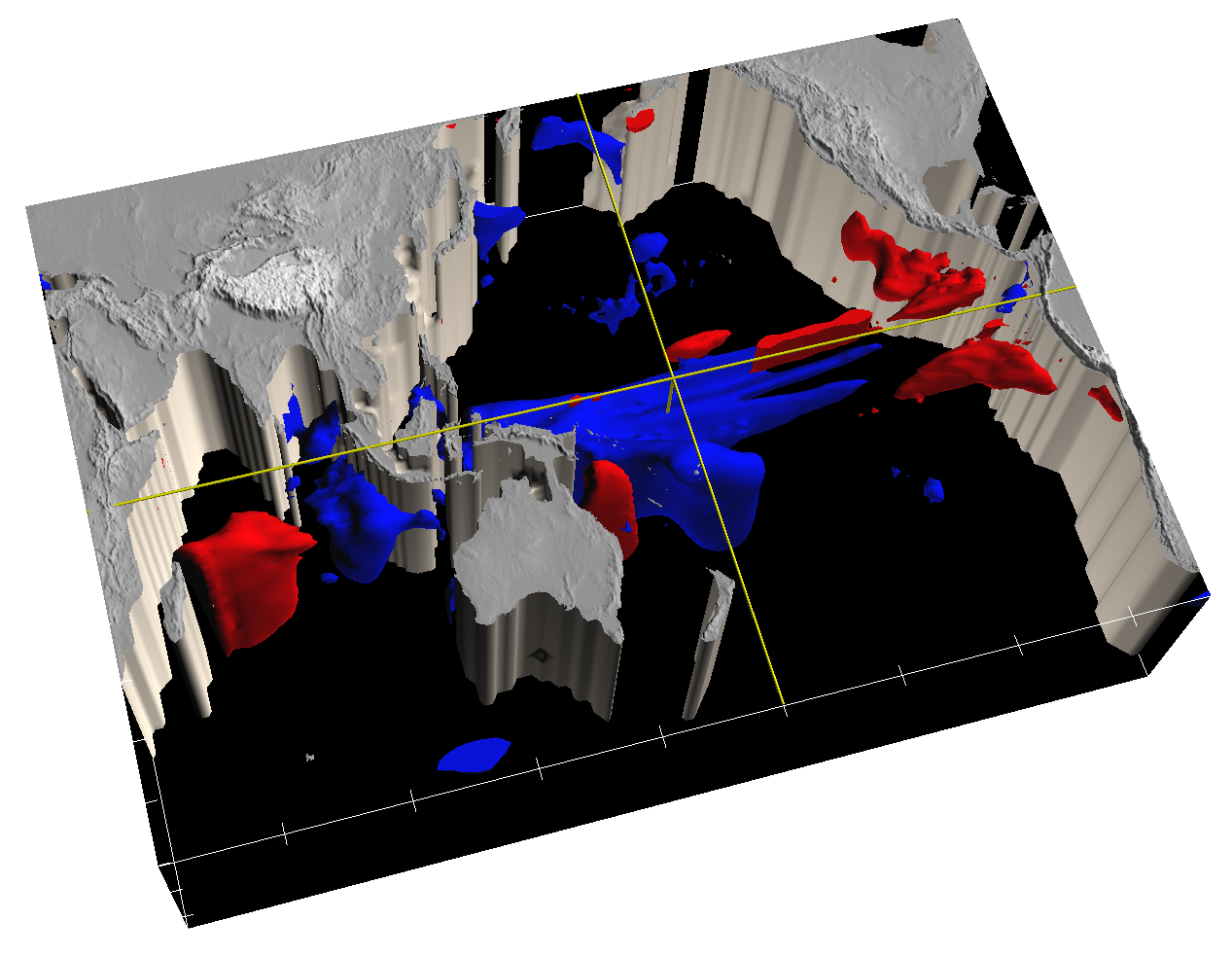
|
Ocean temperature anomalies at the peak of an El Niņo event,
simulated in a state-of-the-art climate model at GFDL/NOAA.
Worldwide losses resulting from the 1997-98 El Niņo are estimated
at $32-$96 billion.
QuickTime Animation (5.5 Mb) |
| Atmosphere (Earth, Jupiter, Mars) | |
|---|---|
Radiative Transfer during Convection | |
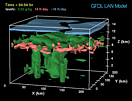
|
Deep convection and its associated mesoscale circulations were modeled using the Lipps-Hemler three-dimensional cloud-system model. |
Transport Dynamics | |
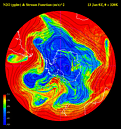
|
Synthesis of the dynamics governing transport in the upper troposphere include a model that shows the nitrous oxide mixing ratio in the Southern Hemisphere. Quicktime Animation (92 Mb) |
Mars | |
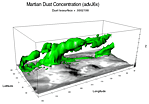
|
Dust Storms and Wind/Topographic Patterns |
Jupiter's Great Red Spot | |

|
Temperature Structure of Vortex |
| Climate Diagnostics | |
|---|---|
Ocean Observation and Modeling (LEVITUS) | |
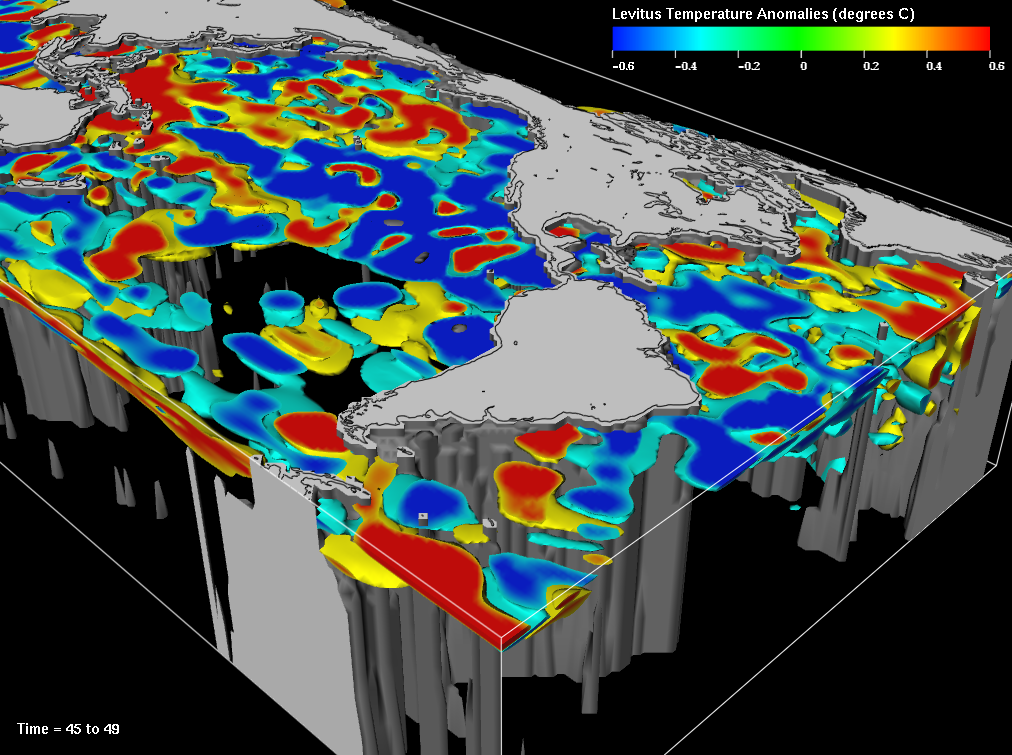
|
The LEVITUS data set (left) represents objectively analyzed fields of major ocean parameters, such as temperature, at the annual, seasonal, and monthly time scales. Researchers here at GFDL/NOAA rely on such empirical results as a basis for theoretical development. |
| Climate Prediction | |
|---|---|
Hurricanes in an Enhanced CO2 Climate | |
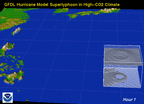
|
See this section from a presentation given at SuperComputing '99.
Animation: AVI (5.3 Mb) | Quicktime (6.8 Mb) |
Effect of CO2 Doubling on Surface Air Temperature | |
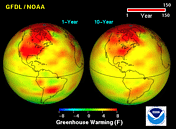
|
Animations: 1 & 10 Year Filters MPEG (3.6 Mb), 1 & 10 Year Filters AVI (8.2 Mb), 10 Year Filter Only MPEG (1.6 Mb) |
Combined Effects of CO2 Doubling on Ocean/Atmosphere | |

|
Three-dimensional view of projected surface air temperature and ocean
warming due to greenhouse gases as calculated by a low-resolution
GFDL coupled ocean-atmosphere climate model. Read this
annotated handout
to learn more.
|
Temperature Response to Increased Atmospheric CO2 | |
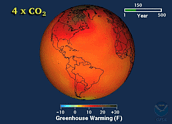
|
CO2 doubling and quadrupling presented at the
"White House Conference on Global Climate Change", 6-Oct-97.
(Description)
AVI Animation (16 Mb) |
Soil Moisture Effects | |
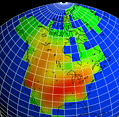
|
In response to increasing CO2, the GFDL model projects substantial decreases in soil moisture over most mid-latitude continental areas during summer. |
Sea Ice Effects | |
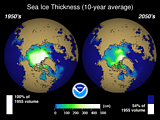
|
The figure summarizes the time evolution of sea ice
thicknesses simulated in one of GFDL's R30 atmosphere-ocean
general circulation model experiments.
AVI Animation (5.7 Mb) |
El Niņo Forecasting | |

|
Ocean temperature anomalies at the peak of an El Niņo event,
simulated in a state-of-the-art climate model at GFDL/NOAA.
Worldwide losses resulting from the 1997-98 El Niņo are estimated
at $32-$96 billion.
QuickTime Animation (5.5 Mb) |
| Hurricanes | |
|---|---|
Andrew (1992) | |

|
Costliest hurricane to ever strike the U.S. (Description) |
Emily (1993) | |

|
Grazed the Outer Banks of North Carolina. (Description) Animations: MPEG (7.2 Mb), Quicktime(21 Mb) |
(Typhoon) Tim (1994) | |

|
Early forecast in the western Pacific (Taiwan). |
Gordon (1994) | |

|
Distorted by vertical wind shear, crossed Florida west-to-east. |
Opal (1995) | |

|
Category 5, but weakened before landfall in Florida. (Description) |
Erin (1995) | |

|
Crossed Florida, then made a second landfall. (Description) |
Fran (1996) | |

|
One of two storms to make landfall in the Carolinas this year. (Description) Animations: MPEG (4.4 Mb), Quicktime (12 Mb) |
Georges (1998) | |
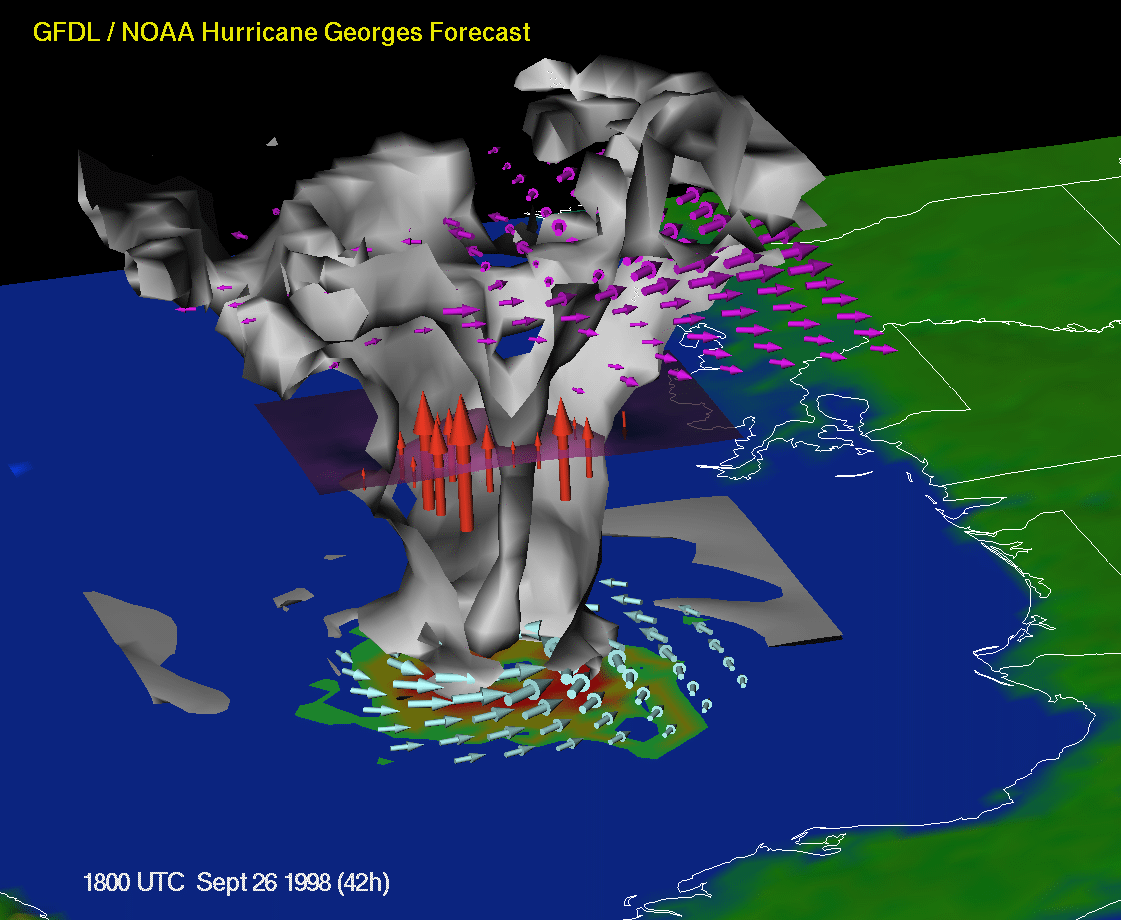
|
Deadly storm which raked Puerto Rico, Hispaniola, Cuba , and the
Florida Keys, then traversed the Gulf of Mexico to hit the central
Gulf coast. See this
annotated handout
for an explanation on the visualization.
Animations: Panoramic View MPEG (7.4 Mb), AVI (25 Mb) Close-up View MPEG (7.7 Mb), AVI (42 Mb) |
Mitch (1998) | |
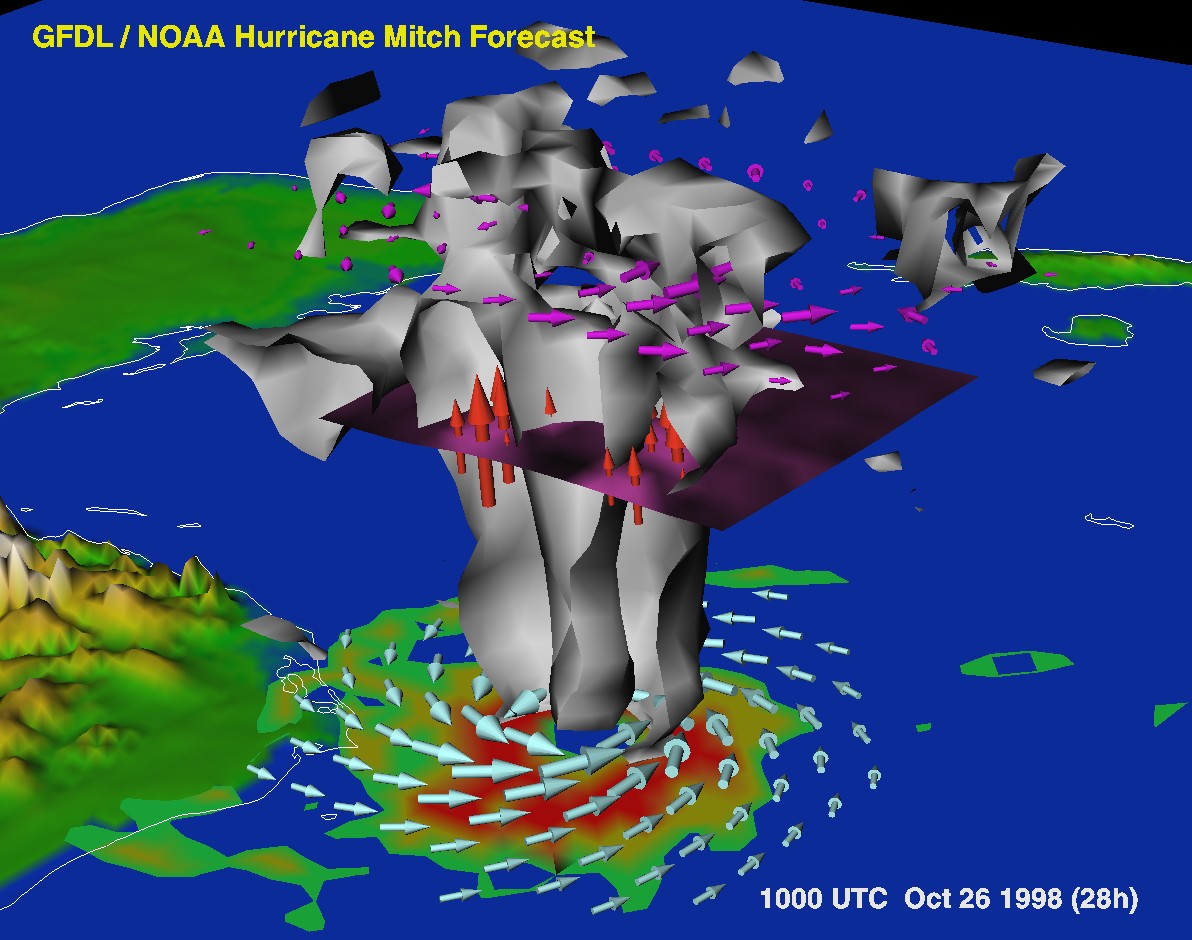
|
Deadliest hurricane to hit Central America in 200 years. A category
5 storm at one point, Mitch stalled off the coast of Honduras, then
slowly moved through Central America, causing massive flooding.
Animations: MPEG (8.7 Mb), AVI (32 Mb) |
Floyd (1999) | |

|
One of the costliest hurricanes to ever strike the U.S. See this
annotated handout
for an explanation on the visualization.
TIFF Image (1.3 Mb) Animations: 3D View MPEG (8.3 Mb), AVI (11.6 Mb) Instantaneous Precipitation MPEG (9.4 Mb), AVI (9.9 Mb) Accumulated Precipitation AVI (12.4 Mb) |
Isabel (2003) | |

|
Hurricane Isabel, which struck the Outer Banks of North Carolina on
September 19th, 2003, caused extensive damage over a large area of the
mid-Atlantic coast stretching from North Carolina to northern Virginia.
|
| Mesoscale Dynamics | |
|---|---|
The Blizzard of '93 | |
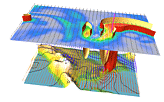
|
Advanced storm diagnostics developed at GFDL provide important insights into the evolution of intense storms, such as the so-called "Blizzard of '93", which roared up the east coast of the U.S. on 13-14 March 1993, setting new records in terms of snowfall, temperatures, and sea-level pressures. Some additional information is available from the mesoscale_dynamics group. |
Mesoscale Circulation Modeling | |

|
A stand alone explicit convection ZETAC model simulation (TERRA HRG_a) was done for the globe with an astonishing averaged grid resolution of about 10-12 km. Images and animations are available for this in addition to lower resolution experiments (TERRA HRG_00) and Pacific Storm Tracking. |
Cyclones and Storms | |
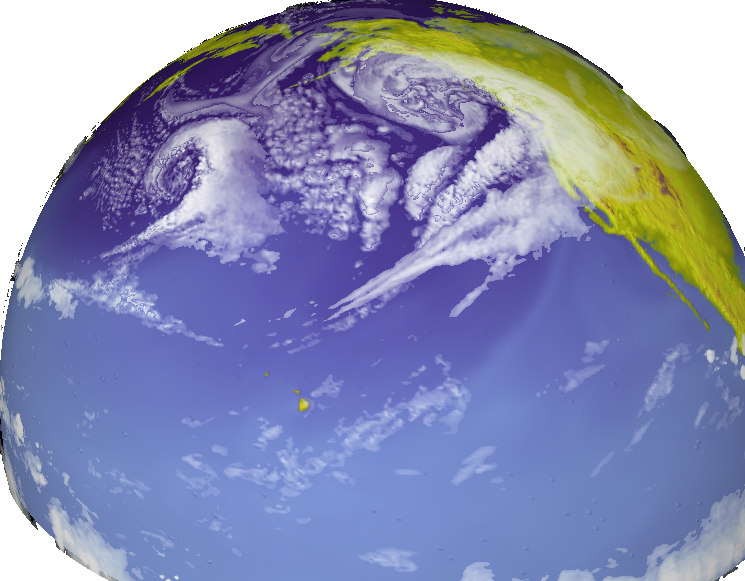
|
Developed at GFDL, ZETANC is a high resolution, non-hydrostatic, fully compressible model of hemispheric extent. The model is being used for the simulation of the detailed structure of extra-tropical storms and storm tracks. The studies are aimed in particular at a more definitive understanding of the effects of moist convection on storm structure and evolution. |
| Oceans | |
|---|---|
Ocean Surface Speed | |
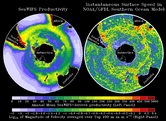
|
A three-dimensional ocean circulation model has been used for studying both the ocean climate system and more idealized ocean circulations. |
Surface Height (Eddies) | |
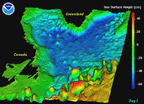
|
Eddies have a profound effect on ocean mixing processes.
Models here at GFDL have improved model resolution to resolve
smaller eddies, which previous models could not do.
AVI Animation (29 Mb) |
